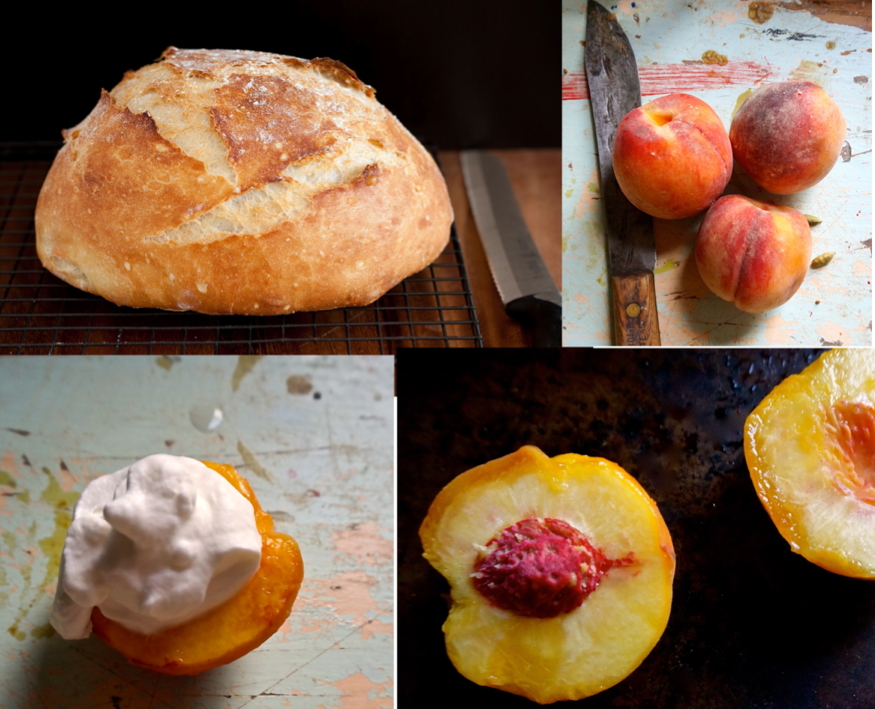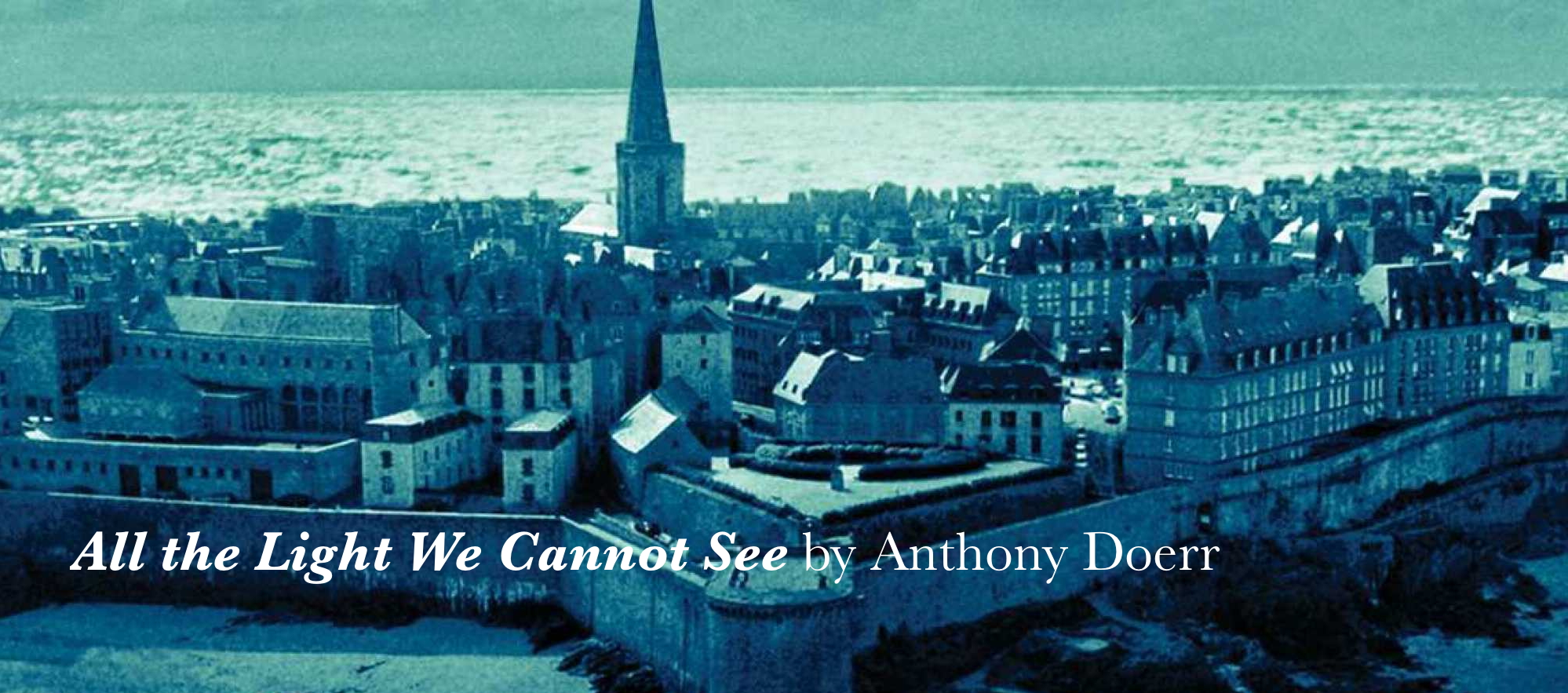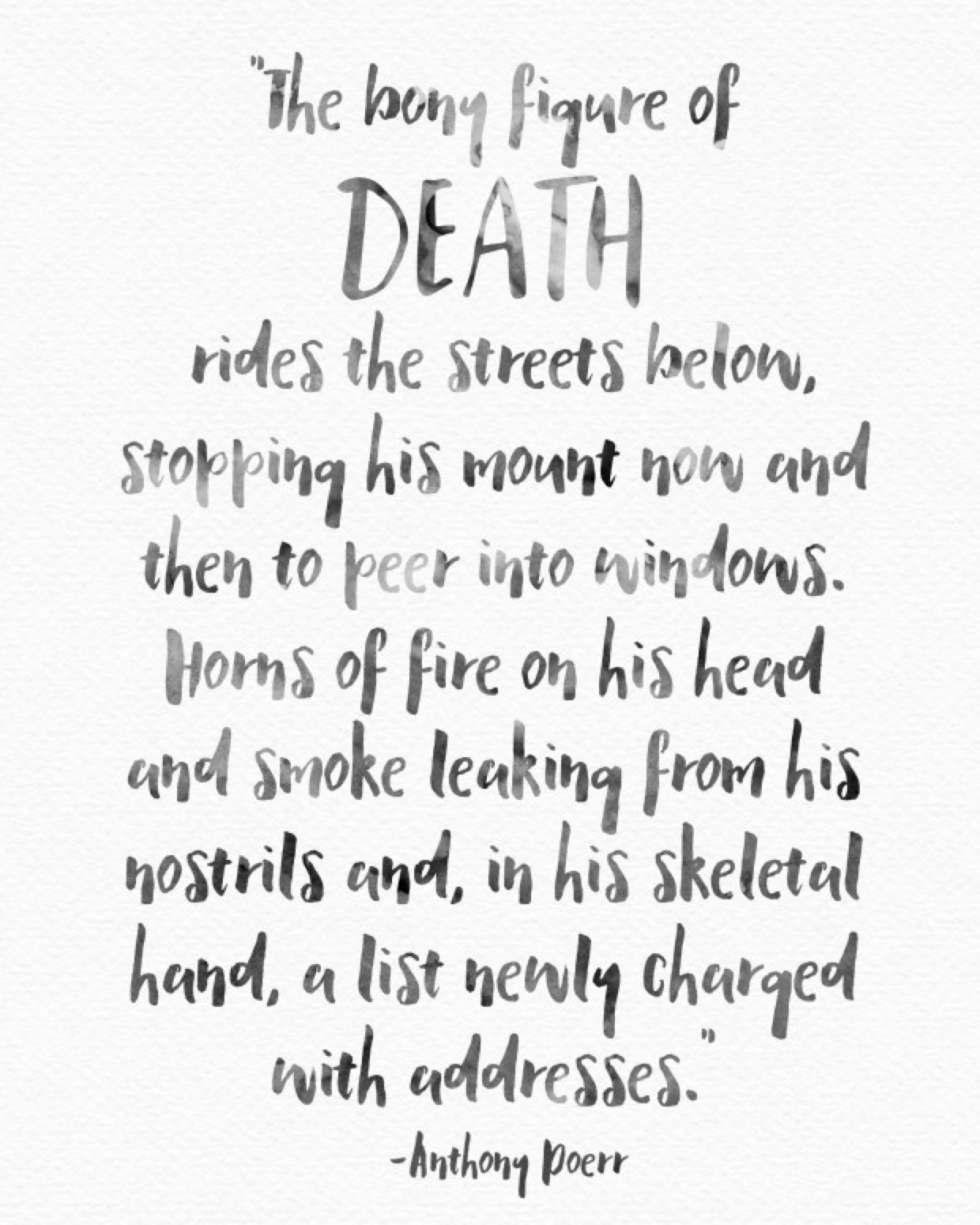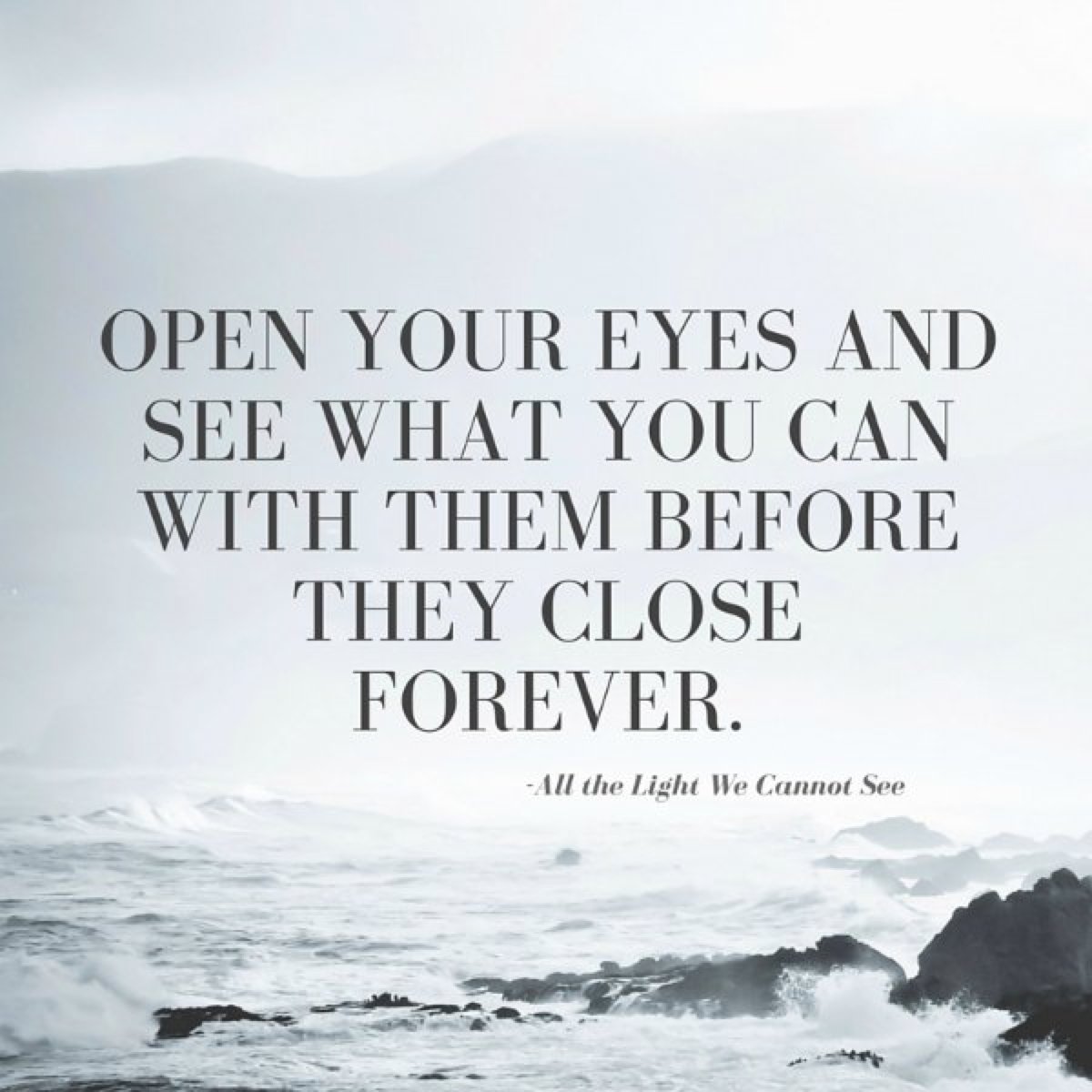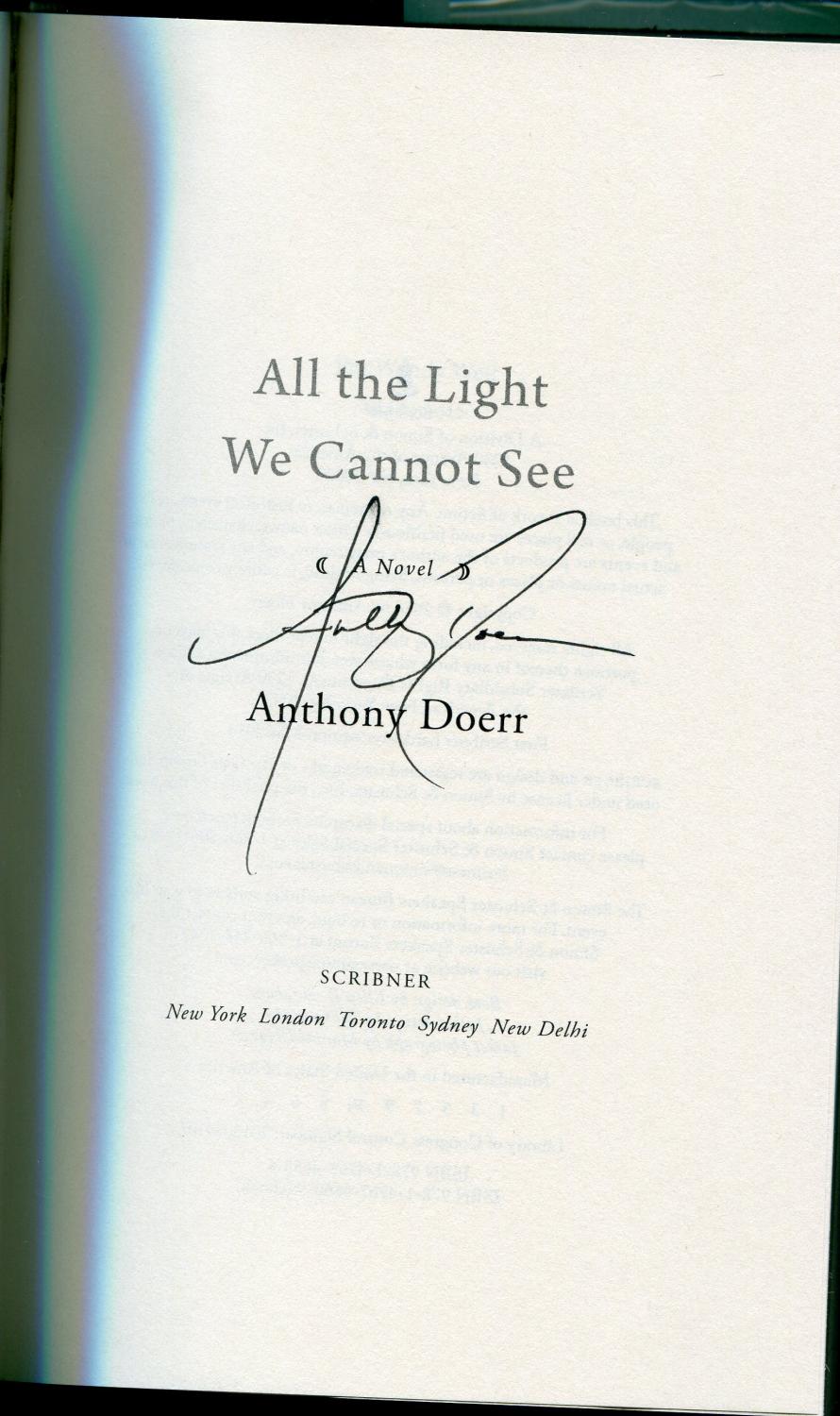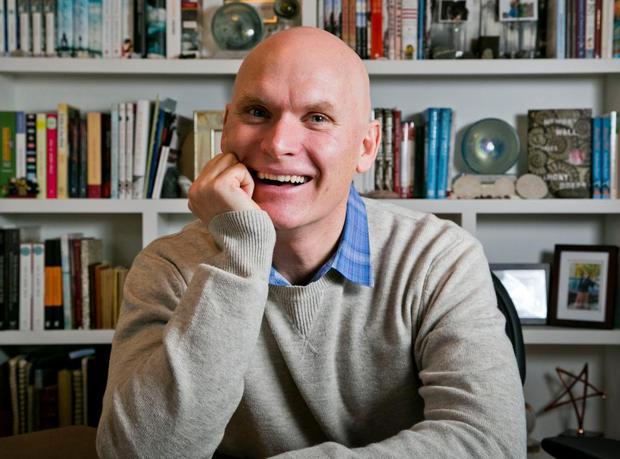| Written in short, elegant chapters that explore human nature and the contradictory power of technology, Doerr encompasses WW2 within an examination of the lives and worlds of two teenagers: Marie-Laure LeBlanc, a blind French girl from Paris, and Werner Pfennig, a German whiz-kid desperate to leave the coal mine fate of his home town of Essen. Written mostly in the present tense, with recurring flashbacks throughout both children’s lives, All The Light We Cannot See progresses inevitably to their meeting during the siege of St.-Malo, France, in August of 1944.
|
Characters
Marie-Laure lives with her father in Paris near the Museum of Natural History, where he works as its master locksmith. When she is six, Marie-Laure goes blind and her father builds a perfect miniature of their neighborhood so she can memorize it by touch and navigate her way home. When she is twelve, the Nazis occupy Paris and father and daughter flee to the walled citadel of Saint-Malo, where Marie-Laure’s reclusive great-uncle lives in a tall house by the sea. They carry what might be the museum’s most valuable and dangerous jewel.
In a mining town in Germany, the orphan Werner Pfennig grows up with his younger sister, enchanted by a crude radio they find. Werner becomes an expert at building and fixing these crucial new instruments, a talent that wins him a place at a brutal academy for Hitler Youth, then a special assignment to track the resistance. More and more aware of the human cost of his intelligence, Werner travels through the heart of the war and, finally, into Saint-Malo, where his story and Marie-Laure’s converge.
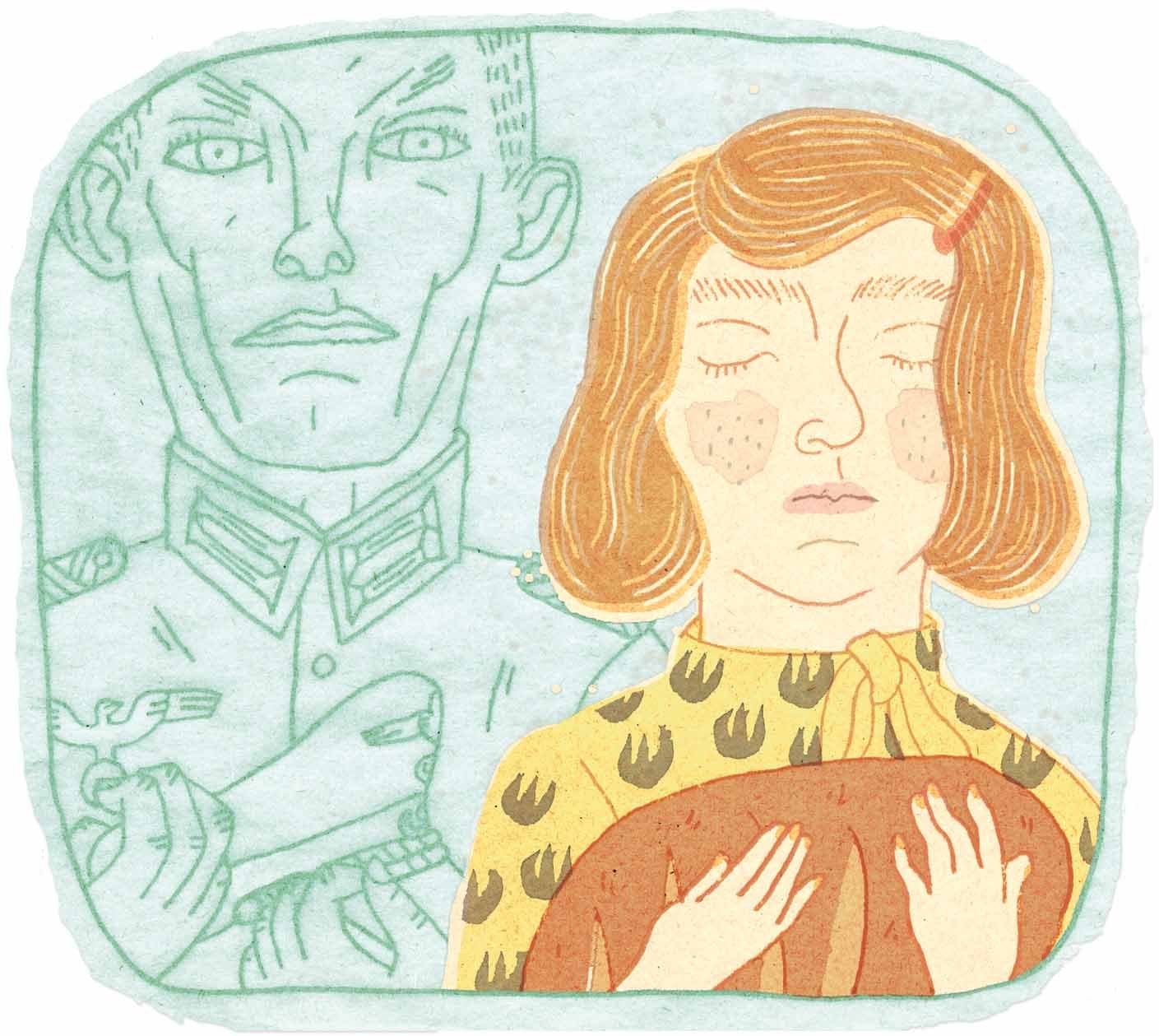
- Daniel LeBlanc - Marie Laure’s father.
- Frank “The Giant” Volkheimer - Staff Sergeant
- Jutta Pfennig - Werner’s sister.
- Frau Elena - Head of the orphanage
- Great-Uncle Etienne LeBlanc - eccentric recluse
- Madame Manec - Etienner’s housekeeper
- Reinhold von Rumpel - gemologist and sergeant major in the Wehrmacht
- Dr. Hauptmnn - Instructor of technical services at Sculpforta
- Frederick - Werner’s bunkmate and only friend at Sculpforta
- Frau Elna -- runs orphange where Werner and Jutta grow up
- Madame Ruelle -- owner of Saint-Malo’s bakery
- Claude Levitte -- perfumer in Saint-Malo
- Bastyian -- commander in charge of field sevices at Schulpforta

|
|

All the Light We Cannot See
What does the title mean? According to the author:
“It’s a reference first and foremost to all the light we literally cannot see: that is, the wavelengths of the electromagnetic spectrum that are beyond the ability of human eyes to detect (radio waves, of course, being the most relevant). It’s also a metaphorical suggestion that there are countless invisiblestories still buried within World War II — that stories of ordinary children, for example, are a kind of light we do not typically see. Ultimately, the title is intended as a suggestion that we spend too much time focused on only a small slice of the spectrum of possibility.”

|
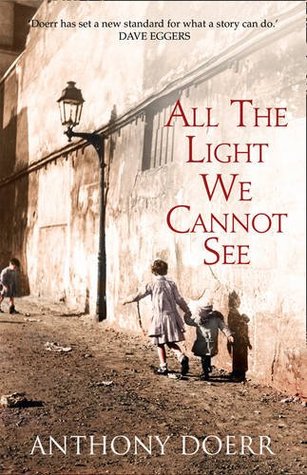
Discussion Questions
1. The book opens with two epigraphs. How do these quotes set the scene for the rest of the book? Discuss how the radio plays a major part in the story and the time period. How do you think the impact of the radio back then compares with the impact of the Internet on today’s society?
2. The narration moves back and forth both in time and between different characters. How did this affect your reading experience? How do you think the experience would have been different if the story had been told entirely in chronological order?
3. Whose story did you enjoy the most? Was there any character you wanted more insight into?
4. When Werner and Jutta first hear the Frenchman on the radio, he concludes his broadcast by saying “Open your eyes and see what you can with them before they close forever” (48–49), and Werner recalls these words throughout the book (86, 264, 409). How do you think this phrase relates to the overall message of the story? How does it relate to Madame Manec’s question: “Don’t you want to be alive before you die?” (270)?
5. Marie-Laure realizes “This...is the basis of his fear, all fear. That a light you are powerless to stop will turn on you and usher a bullet to its mark” (160). How does this image constitute the most general basis of all fear? Do you agree?
6. Reread Madame Manec’s boiling frog analogy on page 284. Etienne later asks Marie-Laure, “Who was supposed to be the frog? Her? Or the Germans?” (328). Who did you think Madame Manec meant? Could it have been someone other than herself or the Germans? What does it say about Etienne that he doesn’t consider himself to be the frog?
7. Werner thinks, “That is how things are...with everybody in this unit, in this army, in this world, they do as they’re told, they get scared, they move about with only themselves in mind. Name me someone who does not” (368). But in fact many of the characters show great courage and selflessness throughout the story in some way, big or small. Talk about the different ways they put themselves at risk in order to do what they think is right. Who did you admire most?
8. The author writes, “To shut your eyes is to guess nothing of blindness” (390). What did you learn or realize about blindness through Marie-Laure’s perspective? Do you think her being blind gave her any advantages?
9. One of Werner’s bravest moments is when he confronts von Rumpel: “All your life you wait, and then it finally comes, and are you ready?” (465). Have you ever had a moment like that? Were you ready? What would you say that moment is for some of the other characters?
10. Why do you think Marie-Laure gave Werner the little iron key? Why might Werner have gone back for the wooden house but left the Sea of Flames?
11. Von Rumpel seemed to believe in the power of the Sea of Flames, but was it truly a supernatural object or was it merely a gemstone at the center of coincidence? Do you think it brought any protection to Marie-Laure and/or bad luck to those she loved?
12. When Werner and Marie-Laure discuss the unknown fate of Captain Nemo at the end of Twenty Thousand Leagues Under the Sea, Marie-Laure suggests the open-endedness is intentional and meant to make us wonder (472). Are there any unanswered questions from this story that you think are meant to make us wonder?
13. The 1970s image of Jutta is one of a woman deeply guilt-ridden and self-conscious about her identity as a German. Why do you think she feels so much guilt over the crimes of others? Can you relate to this? Do you think she should feel any shame about her identity?
14. What do you think of the author’s decision to flash forward at the end of the book? Did you like getting a peek into the future of some of these characters? Did anything surprise you?
15. Aleksandr Solzhenitsyn once wrote that “the line dividing good and evil cuts through the heart of every human being.” All the Light We Cannot See is filled with examples of human nature at its best and worst. Discuss the themes of good versus evil throughout the story. How do they drive each other? What do you think are the ultimate lessons that these characters and the resolution of their stories teach us?
16. According to J. R. Moehringer, “Anthony Doerr sees the world as a scientist, but feels it as a poet. He knows about everything—radios, diamonds, mollusks, birds, flowers, locks, guns—but he also writes a line so beautiful, creates an image or scene so haunting, it makes you think forever differently about the big things—love, fear, cruelty, kindness, the countless facets of the human heart.” Would you agree? Cite examples of the scientific vs. the poetic in this text. |
|
Food
Because there is often so little, food figures heavily in the book. For Werner, who often goes hungry in his crowded orphanage, it is a cake cascadeing with powdered sugar and piled with forbidden cream, fed to him by a Nazi Corporal, that lures him into the Hitler Youth. Marie-Laure’s blindness sharpens her sense of taste and smell, which makes for some incredible eating scenes. After trekking for days on foot to escape the occupation in Paris, Marie-Laure and her father finally find refuge at his uncle’s house in Saint-Malo. Once there, the housekeeper fixes them a humble supper of omelets, canned peaches, and crusty bread.
“Eggs crack. Butter pops in a hot pan. Soon all of Marie-Laure’s attention is absorbed by the smells blooming around her: egg, spinach, melting cheese. An omelette arrives. The eggs taste like clouds. Like spun gold. Marie-Laure can hear a can opening, juice slopping into a bowl. Seconds later she is eating wedges of wet sunlight.”
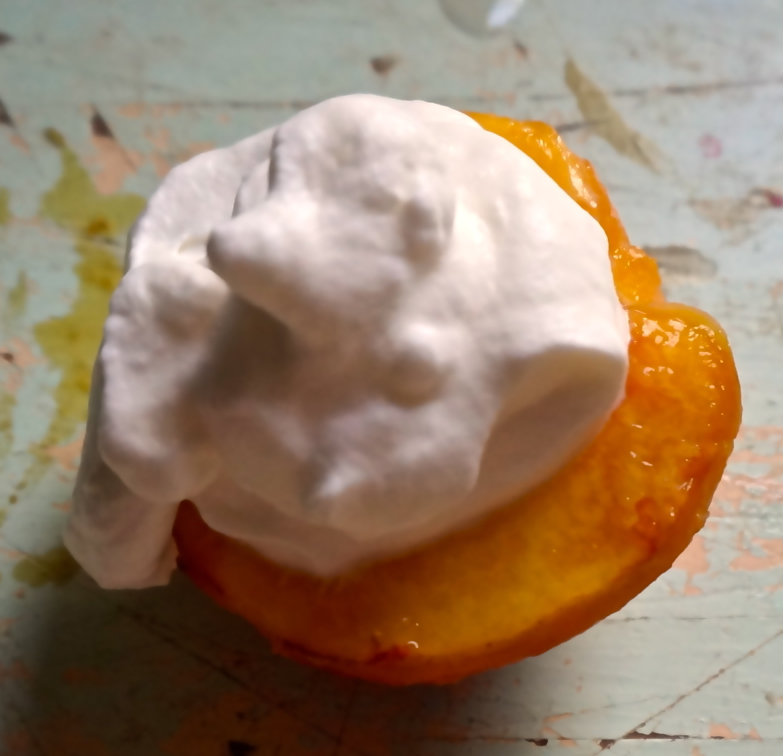
YummyBooks: Cardamom Peaches and Crusty Bread
Ingredients:
2 pounds of ripe freestone peaches (about 6)
3 cups water
2 cups sugar
4 cardamom pods, crushed
Directions:
1. Bring a medium pot of water to a rolling boil. Lower peaches into the water and boil for 40 seconds.
2.
Remove them gently with a slotted spoon and transfer them to a baking sheet. Once they have cooled enough to handle, gently slip the skins off.
3.
Cut the peaches in half and remove the pits. In a medium saucepan, whisk together water, sugar and cardamom pods. Simmer over medium heat, whisking until sugar dissolves.
4. Carefully lower the peeled peaches into 4 1-pint canning jars and pour the syrup over them. Try to get 1 cardamom pod in each jar. Process the jars per their instructions. Peaches will keep all winter long.
5.
Serve with a mound of unsweetened whipped cream.
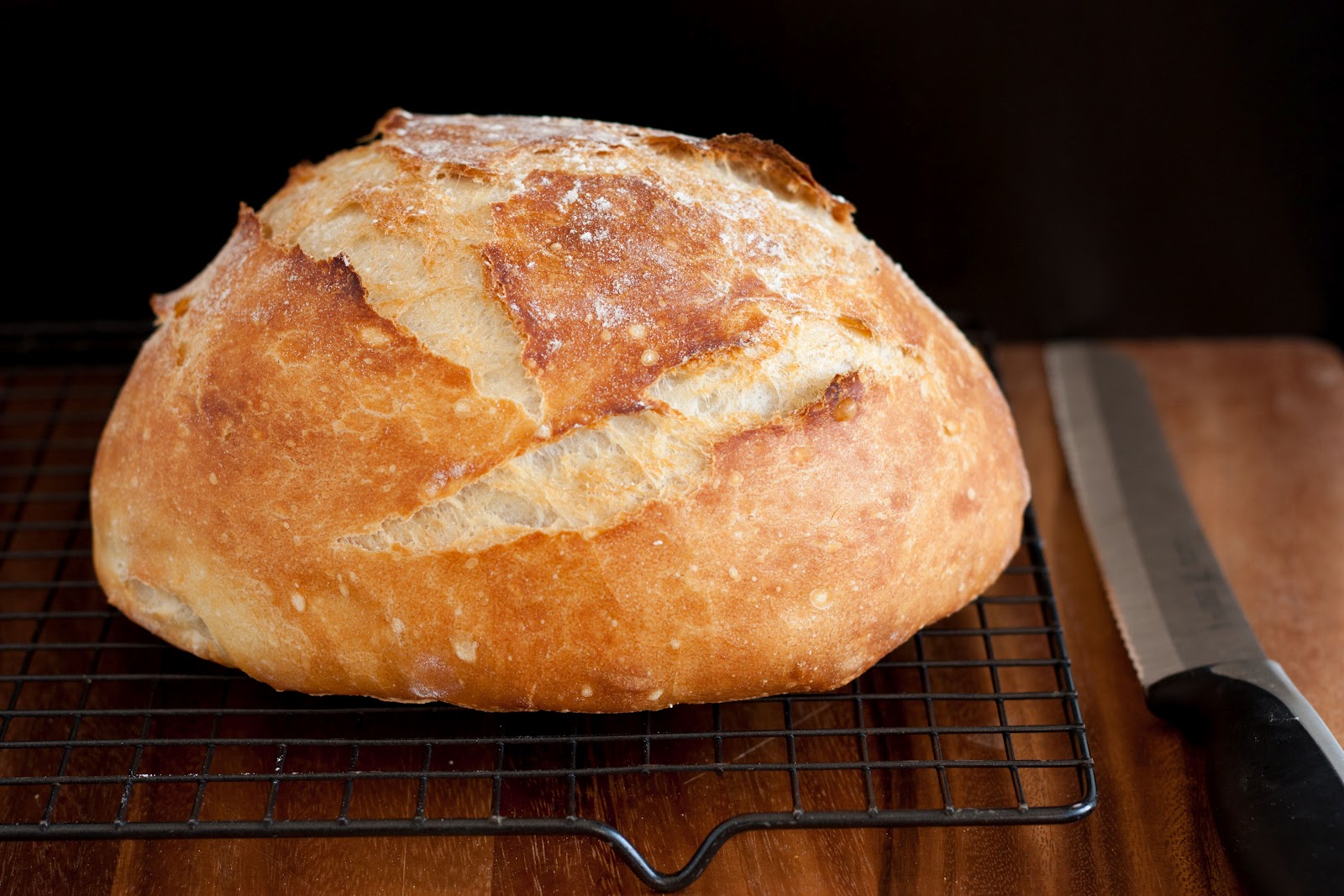
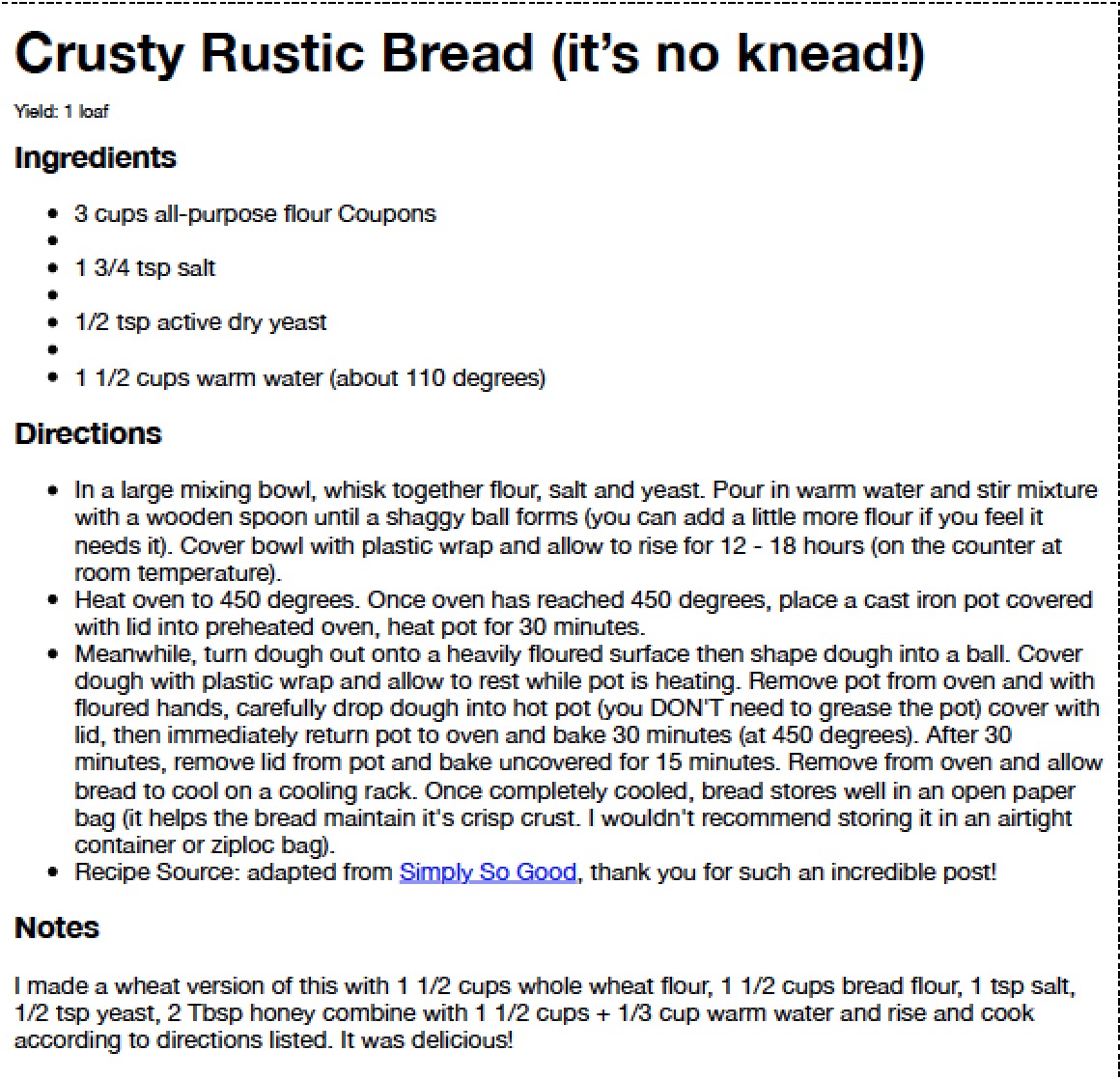
|
Book Reviews
“‘All the Light We Cannot See’ by Anthony Doerr” by Amanda Vaill, Washington Post, 5 May 2014. (pdf)
 “All the Light We Cannot See by Anthony Doerr Review -- A Story of Morality, Science, and Nazi Occupation,” by Carmen Callil, The Guardian, 17 May 2014. (pdf) “All the Light We Cannot See by Anthony Doerr Review -- A Story of Morality, Science, and Nazi Occupation,” by Carmen Callil, The Guardian, 17 May 2014. (pdf)
“Darkness Visible” by William T. Vollmann, New York Times Book Review, 8 May 2014 (when selected as one of the year’s ten best books. (pdf)
“A Fractured Tale Of Time, War And A Really Big Diamond” by Alan Cheuse, NPR Books, 10 May 2014. (pdf)
“Light Found in Darkness of Wartime” by Janet Maslin, New York Times, 28 April 2014. (pdf)
“One-Armed Nazis and Albino Children: The Year’s Surprise Bestseller Turns the Holocaust into a Sentimental Mess” by Dominic Green, New Republic, 14 January 2015. (pdf)
Audio & Video
Readers’ Review: Diane Rehm plus three others discuss the book at length.
Audio Books Free Online complete text.
Netflix is filming a four-part liited edition series. |
|
Teacher Guides
 Course Hero Teacher Guide and Infographic. (pdf) Course Hero Teacher Guide and Infographic. (pdf)
Good Reads includes several chapters preview.
 LitChart, thorough, with worksheets. Teacher Guide. (pdf) LitChart, thorough, with worksheets. Teacher Guide. (pdf)
LitLovers: A Well-Read Online Community.
NoveList by Ebsco includes “big picture” topics. (pdf)
ReadingGroupGuides: The Online Community for Reading Groups.
Yummy Books offers recipes for book clubs.
 Assignments Assignments
Warm-ups by Steffani Packer. (ppt)
Unit Materials: Chapter Reading, Notes, Assignments; Eight Close Reading Passages; -- Amazing work by Crista Bell. (pdf)
Vocabulary in Context. (pdf)
Baker’s Dozen of Q2 Prompts written by Students.(pdf)
Theme Presentation Assignment, created by Eileen McClure Nelson. (ppt) |
